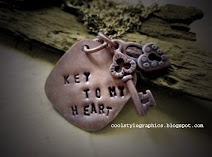Use your creativity and imagination
First of all, this is not one of my typical tutorials where I explain things from A till Z. Instead, I'll give you some hints on how I created the illustration above and along the way I give you some tips on how to keep your effects flexible. Let me start with some basic information...
Create rings using the Pathfinder
If you've followed my previous article, the above image doesn't need much of an explanation since you had some practice already. Just to refresh your memory, here is how you create a ring:
- Select the Circle Tool and craw a circle (holding down shift key)
- Draw another smaller circle on top
- Select both circles using the Selection Tool (black arrow)
- Click Horizontal Align Center and then Vertical Align Center from the Align palette or Toolbar at the top
- Click the Subtract from shape area option from the Pathfinder palette and click the Expand button
Add Pucker & Bloat Effect
With the ring still selected go to Object > Path and select Add Anchor Points. Now go to Effect > Distort & Transform > Pucker & Bloat.
Move the slider to the left.
Move the slider to the right.
Experiment with the shape of the object. Try a circle, a square or a hexagon etc., add (more) anchor points, then apply the effect.
Good to know tips!
Advantages of Effects versus Filters
Remember when you apply an effect, the Effect can be modified at all time after it has been applied. You can double click the effect in the Appearance palette. If you apply a Filter however, this isn't possible. The path is permanently modified. Make sure to choose Effect > Distort & Transform > Pucker & Bloat. This way you remain this flexibility.
Only if you are 100% you won't change the result of the effect, you can choose to expand it via Object > Expand. This way the path will be adapted to its new shape. Here is what I did to achieve the effect shown in the image:
- Fill the shape with a Radial Gradient (Orange in center to yellow)
- Duplicate the Fill in the Appearance palette
- Apply white color to the duplicate Fill
- Select the Gradient Fill in the Appearance palette
- Choose Effects > Path > Offset Path.. (Offset: 24, Joins: Miter and Miter Limit: 4)
- Choose Effects > Stylize > Feather... (40 px)
Create Graphic Styles for the Effects you like
If you like the effects you've created and you want to apply them to other objects in the future, then you can create a Graphic Style simply by dragging the object into the Graphic Styles palette. You can reapply the style effect by selecting the object and then clicking the Style in the Graphic Styles palette.
Editing the appearance of an object via the Appearance palette
After applying a style to an object, you can still change the settings for each Effect, Fill or Stroke such as changing the color of the gradient, the Feather settings etc. in the Appearance palette.
Create Symbols of objects you want to reuse
It can be a good idea to create Symbols of objects you want to reuse in your design. To create a Symbol, just drag the object in the Symbols palette. To add an instance of the Symbol in your design, just drag the Symbol from the palette on the Canvas. When you change the Symbol's original object (simply double click it in the Symbol's palette), all instances of the Symbol will be updated.
Using Symbols in combination with the Spraying Tool can be handy when you create patterns and you want to keep a certain randomness. Experiment with the Symbol Tools to edit the sprayed symbols. This tool can be a real timesaver in your production process.





















0 comments:
Post a Comment